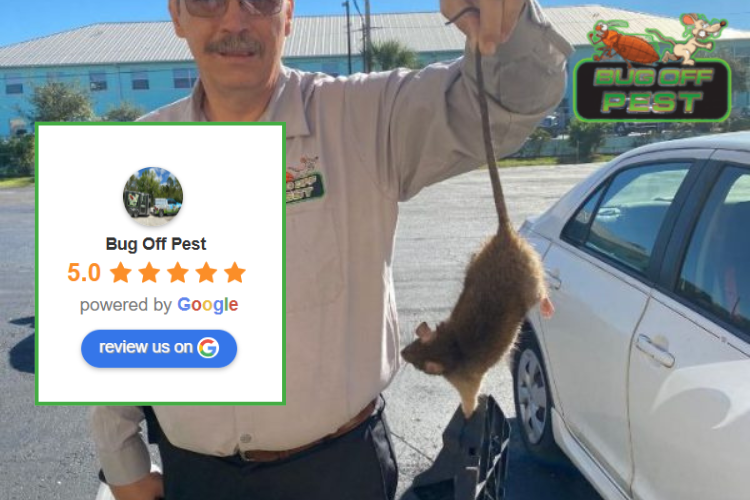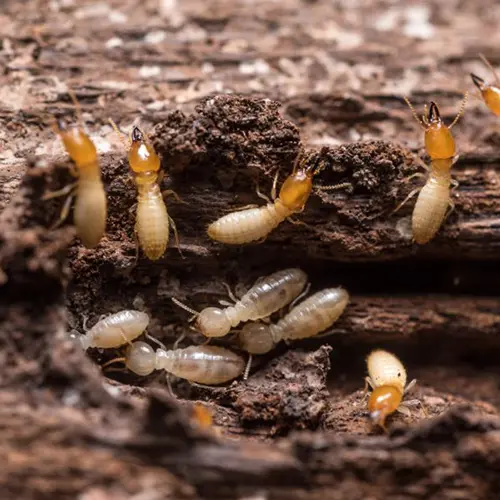Trusted Rodent Control Port Charlotte to Prevent Damage to Your Property
Discover the most recent Breakthroughs in Bug Control and Just How to Execute Reliable Treatment Solutions
In recent years, the area of parasite control has actually witnessed considerable improvements, driven by the requirement for lasting and effective therapy options. Innovative methods such as Integrated Pest Administration (IPM) integrate eco-friendly practices with cutting-edge modern technology, improving both effectiveness and environmental obligation.
Eco-Friendly Bug Control Options
In current years, the demand for eco-friendly pest control choices has actually surged as companies and property owners alike look for lasting choices to traditional chemical therapies. This change is driven by expanding environmental understanding and a wish to decrease the health risks associated with artificial chemicals.

Environment-friendly insect control approaches incorporate a variety of strategies that focus on using all-natural materials and practices. Integrated Parasite Administration (IPM) is one such method, combining organic, social, and mechanical strategies to handle pest populations while reducing reliance on chemicals (Wildlife removal services). This all natural approach highlights prevention through environment control and the introduction of all-natural predators, therefore cultivating a well balanced ecosystem
An additional preferred choice is making use of herb chemicals obtained from plants, which tend to be less hazardous to non-target microorganisms. Products like neem oil and diatomaceous earth have actually gotten grip for their effectiveness in controlling pests while presenting very little threats to human wellness and the environment.
In addition, exemption methods, such as securing access points and maintaining tidiness, play a crucial duty in eco-friendly insect administration. By embracing these lasting techniques, individuals and businesses can efficiently manage pests while promoting a healthier world for future generations.
Smart Modern Technology in Pest Monitoring
Development is reshaping the landscape of parasite monitoring, with clever technology becoming an essential pressure in improving efficiency and effectiveness - Wildlife removal services. The combination of Internet of Points (IoT) devices, expert system (AI), and data analytics is reinventing just how parasite control professionals come close to infestations
Smart catches geared up with sensing units can identify insect activity in real-time, sending out prompt notifies to drivers. This permits timely responses, decreasing damage and minimizing the demand for extensive treatments. Furthermore, AI formulas assess historical data to predict pest habits, making it possible for proactive treatments based on ecological conditions and problem patterns.
Drones and computerized vehicles are likewise playing a considerable duty in pest monitoring, giving airborne analyses of huge areas, recognizing hotspots, and even dispersing targeted therapies. These modern technologies not just streamline operations however also improve security by limiting human direct exposure to possibly harmful chemicals.
Moreover, mobile applications equip consumers to keep track of bug task and access specialist suggestions, cultivating a collective technique to pest monitoring. Overall, the adoption of wise modern technology is setting a new standard in parasite control, stressing data-driven choices and sustainable methods that eventually profit both specialists and house owners alike.
Integrated Parasite Administration Approaches
Integrated Insect Management (IPM) utilizes an all natural approach to pest control, combining various techniques to properly handle pest populations while minimizing threats to human health and the environment. IPM revolves around understanding the pest life cycle, their natural opponents, and the community in which they thrive.
One of the essential components of IPM is checking pest populaces with normal inspections and information collection. This enables click for source the recognition of insect thresholds, establishing when intervention is needed. Cultural practices, such as plant habitat, sanitation, and turning control, are essential in reducing bug prevalence and promoting plant health.
Mechanical controls, including barriers and traps, are also crucial in IPM. These methods can physically eliminate or deter bugs without making use of chemicals. When necessary, the wise application of chemical controls is used, concentrating on targeted treatments that lessen environmental impact.
Education and collaboration amongst stakeholders, consisting of farmers, parasite control professionals, and the community, are essential for the effective application of IPM methods. By focusing on sustainable practices, IPM not just addresses pest concerns but also promotes a healthier ecological community.
Biological Control Techniques
Numerous organic control techniques are increasingly identified for their performance in managing pest populaces while promoting environmental equilibrium. These techniques harness natural killers, parasites, and virus to minimize pest numbers without relying upon synthetic chemicals. The introduction of ladybugs can efficiently manage aphid populaces, while nematodes target soil-dwelling pest larvae.
Additionally, making use of microbial chemicals, such as Bacillus thuringiensis (Bt), provides an eco-friendly choice for taking care of caterpillar insects. These items particularly target pest types, reducing injury to advantageous insects and pollinators. Additionally, preservation biological control emphasizes enhancing habitats for all-natural opponents, such as birds and helpful pests, therefore urging their visibility in farming systems.
Study remains to reveal innovative strategies within this area, such as the usage of pheromones to interfere with pest breeding patterns or the development of biocontrol agents via hereditary engineering. Applying these methods can result in lasting parasite monitoring techniques that reduce the reliance on chemical treatments, eventually cultivating much healthier communities. As understanding of these strategies expands, they are ending up being important elements of integrated parasite monitoring (IPM) strategies, providing a balance in between effective parasite control and best termite pest control ecological stewardship.
DIY Insect Control Solutions
As property owners look for reliable ways to deal with insect problems, do it yourself insect control solutions have gotten popularity for their accessibility and cost-effectiveness. These approaches encourage people to address infestations making use of easily available materials and methods, often without the requirement for specialist treatment.

Furthermore, preserving proper cleanliness and routine inspections can stop insect entrance and nesting (Wildlife removal services). Easy techniques, such as sealing fractures, eliminating food sources, and decluttering, can considerably reduce parasite populations. Traps, both homemade and commercially available, can also use reliable solutions for tracking and managing particular parasites like rodents or bugs

Verdict
The assimilation of environment-friendly insect control options, clever innovation, pest control devices and innovative monitoring methods presents a thorough technique to effective pest monitoring. By embracing Integrated Parasite Administration (IPM) and utilizing organic control methods, alongside do it yourself services, lasting and accountable parasite control can be achieved. These improvements not just improve the effectiveness of insect monitoring methods but likewise add to a healthier atmosphere. Applying these techniques cultivates a balanced environment while effectively attending to pest populaces.
Environment-friendly parasite control approaches incorporate a range of strategies that prioritize the use of natural compounds and techniques. Integrated Parasite Monitoring (IPM) is one such strategy, combining biological, social, and mechanical methods to take care of pest populations while reducing reliance on chemicals. As awareness of these techniques expands, they are coming to be integral components of integrated bug monitoring (IPM) approaches, providing a balance between effective pest control and environmental stewardship.
The integration of green bug control choices, wise innovation, and innovative management approaches presents an extensive approach to reliable parasite administration. By embracing Integrated Pest Monitoring (IPM) and making use of organic control techniques, alongside Do it yourself options, liable and lasting insect control can be achieved.